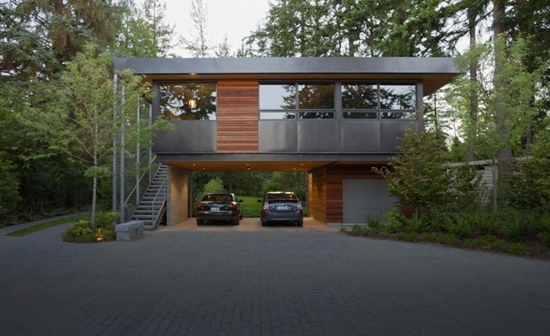During the winter months, my garage is typically something that I pay very little attention to. I don’t keep a vehicle in there so it remains largely ignored except when I need to throw a bag of garbage in there or if I need to grab shovels, toboggans or other winter essentials. Now that we’ve reached the spring thaw, I’m paying more attention to it again, and in doing so I’ve been thinking about what garages mean to people and how we all utilize them a bit differently than was perhaps originally intended.
The garage has historically been designed for the storage of vehicles. In North America, garages were typically built as a separate and stand-alone structure either beside or behind the main residential dwelling. I grew up in an area of Toronto where the houses were built around the beginning of the 20th century, and our garage was located behind the home and accessible via a rear laneway. Because of separation, and because it was built likely not too long after the end of W.W.II there was little in the way of functionality built into it beyond being a place to keep one car and a bunch of tools.
Around the mid-twentieth century, home builders began to experiment with attaching the garage right to homes and connecting them via an internal doorway. For the most part this is now the normal and both houses and garages are built as one.
I now live in a home that was built at the turn of the 21st century and it actually is located directly underneath one of our bedrooms. While original designs were to have a doorway installed that would lead to a stairway inside the home, our grading did not permit the door to be put in place. I now find that I have a 21st century garage but with early 20th century styled access, since to get inside I need to go out the front door and around the side to open the main garage door. It’s still functional, but hardly the convenient design it was meant to be.
Perhaps the best utilization of the space is for our large collection of bicycles, and to keep things organized I taped down parking spaces as well as named, reserved spots for all. I’m actually amazed that the spaces and the organized nature of them has now lasted for 3 summers as each family member stays to their reserved space.
Take a drive along any residential street, including my own and you’ll often get the chance on a warm day to see just how varied the use of garages can be. Many utilize them as storage spaces with shelves lining the side and back walls. Others see the garage as a workshop, while others still see it as the final resting place of many things that no longer have need in the house, but never quite make it to the recycling depot or to the garbage truck.
On a few occasions, you’ll even see how garages have been converted into living space. This is more common in urban areas where land and housing is often at a premium. In many cities around North America you’ll see coach houses or stand alone garages on older homes converted into apartments for rent. On a less grand scale I’ve seen many ‘Man Caves’ inserted in a garage space where big-screen TVs, a bar and a big comfy couch take up the space where a car was once meant to be.
Every spring my wife and I lament how we never utilize our space effectively enough, but the trouble is to be honest is that I don’t really know what an ideal use of a garage for me would be. With a large family we use the space as storage and in the 13-1/2 years I’ve lived here, I don’t think a car has ever set foot inside. But is storage really the best use for it, or am I totally under-utilizing a physical space and thus, reducing it’s overall potential?
I remember growing up how many of my neighbours would tear down their old, decrepit garages and build a completely new space. I always watched with curiosity to see how they’d build it. Most were basic concrete brick slabs with a roof and not much else, but a couple were quite opulent. Many used contractor services but some were ambitious enough to attempt the build as a DIY project.
Only recently did I learn that if one was considering having a new garage built, there are home centres that basically have put a kit together that incorporates all that you would need. Canadian based Rona Home and Garden for example has an entire program set up on their website for garage packages. Whether you are a D.I.Y.’er or someone who’d rather leave it to the pros they have options set up for each.
While the pinnacle of stand alone garages may have been left with previous generations, there still remains hundreds of thousands, if not millions of old, decrepit structures in need of upgrade and replacement. Even to this day I still tend to stop and watch a re-build in an old part of town as it provides me with a sense of nostalgia – and I suppose an element of wanting given the semi-useful nature of my modern garage today.
(Disclaimer: This post has been sponsored by Rona Home and Garden)




Leave a Reply